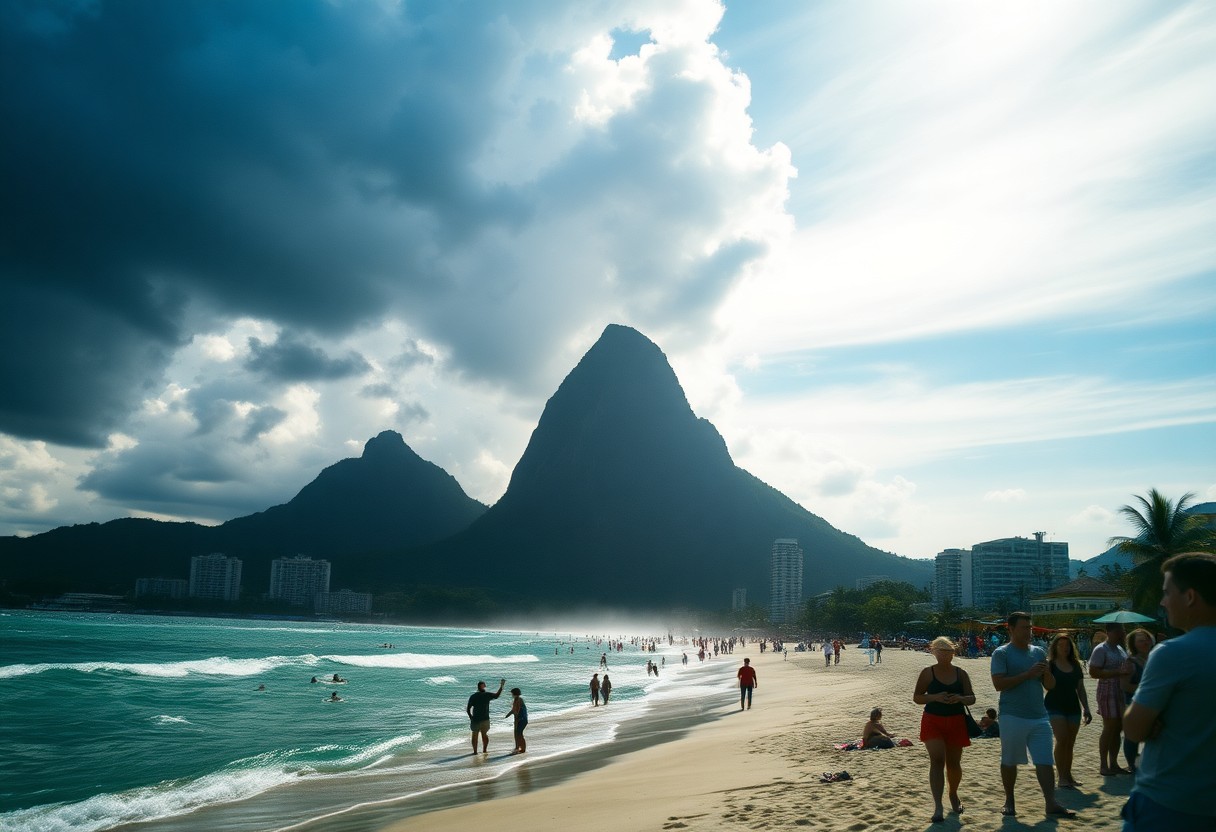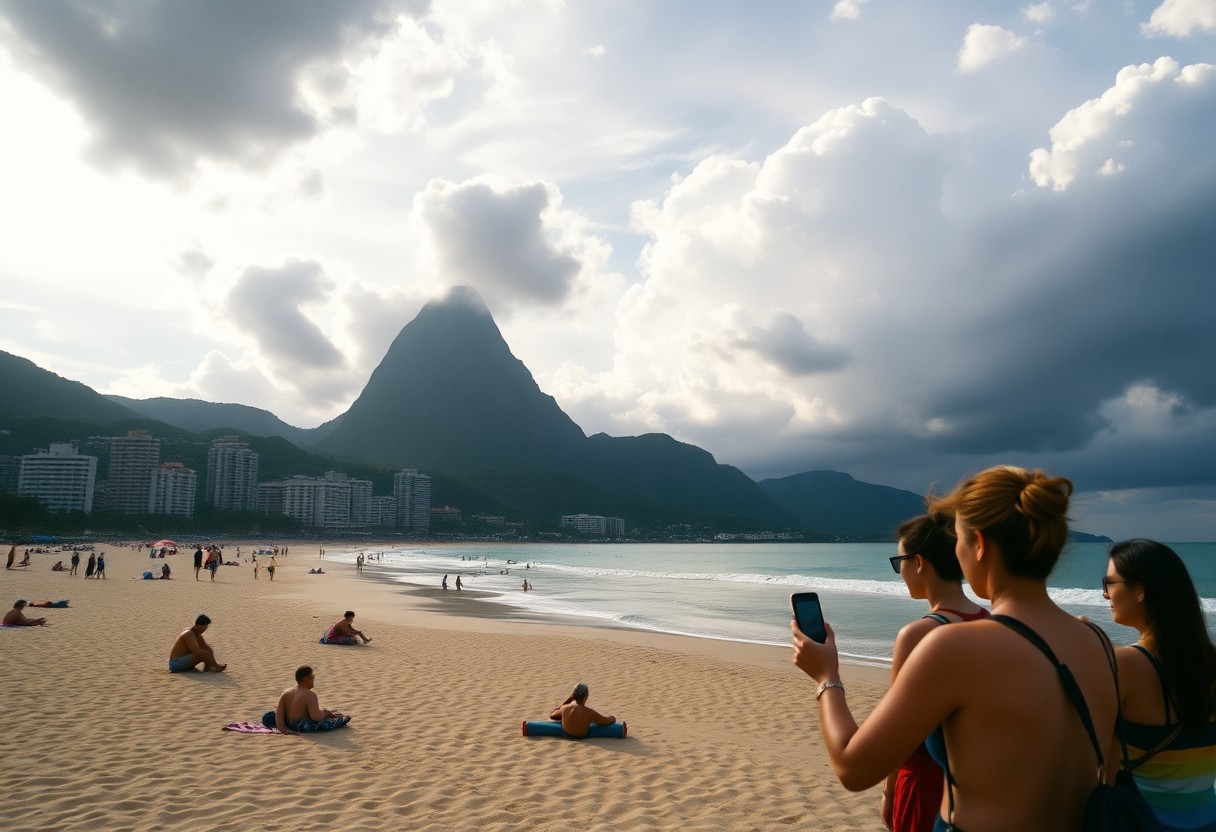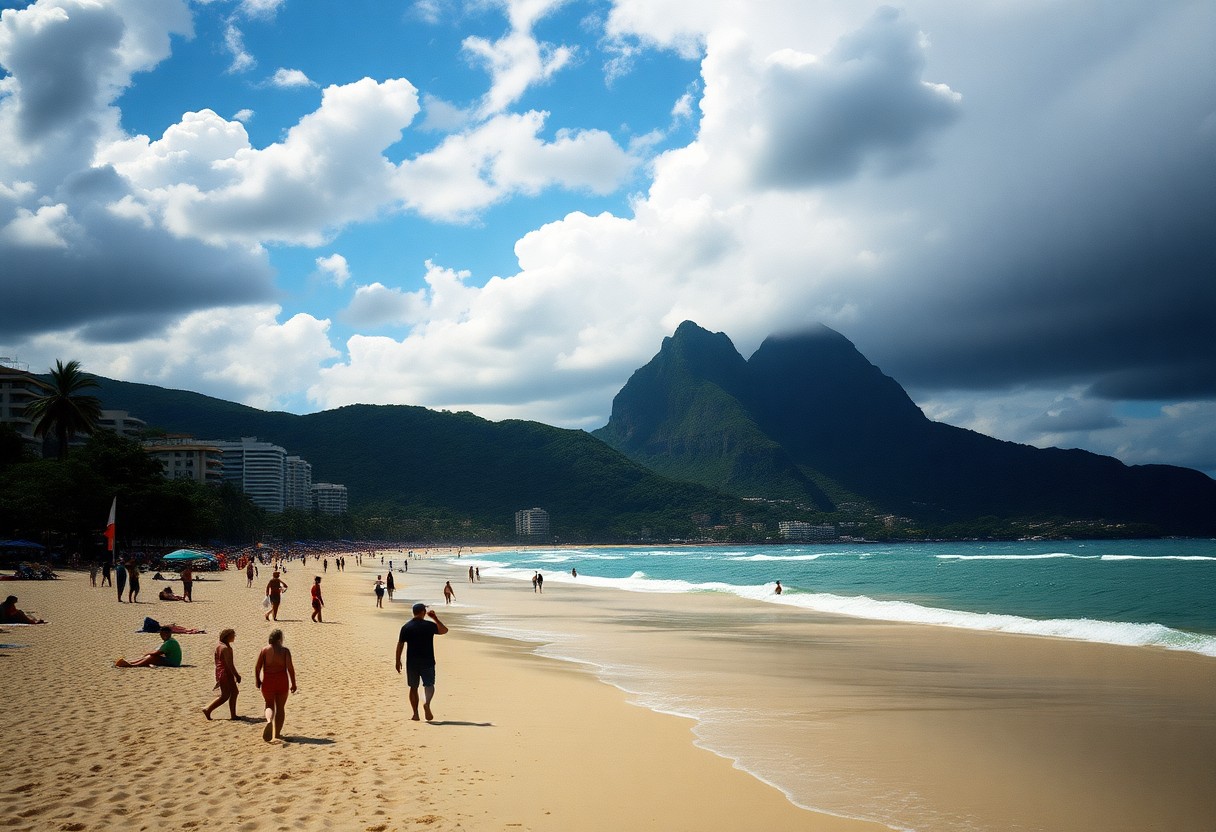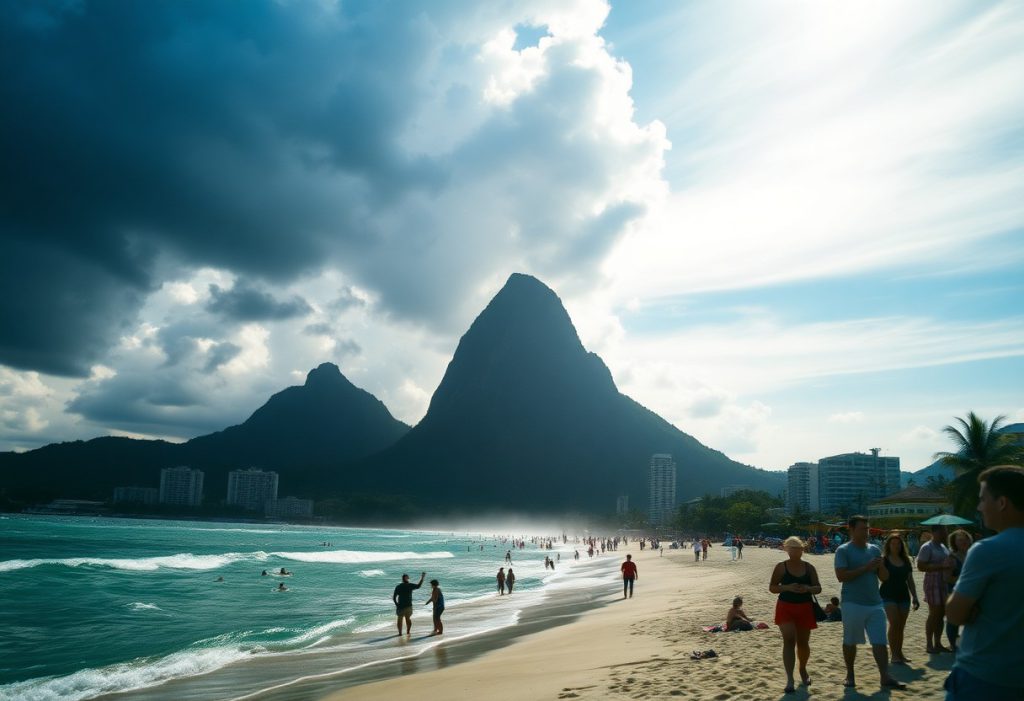As you plan your exciting journey to Rio de Janeiro, understanding the best times to visit can significantly enhance your overall experience. This vibrant city enjoys warm temperatures year-round, yet each season brings its unique atmosphere and events that can influence your travel choices. The summer months from December to March are filled with colorful Carnival celebrations, but they also come with heavy rainfall and large crowds. Your perfect travel window will depend on your personal preferences: if sunbathing and beach activities are your goals, the spring season from September to November offers mild temperatures and fewer tourists. Conversely, budget-conscious travelers might find the winter months (June to August) to be more financially advantageous. By aligning your travel itinerary with local climate and seasonal events, you can greatly enhance your enjoyment during your stay in this stunning city.
Explore Rio de Janeiro's Distinct Weather Patterns for Your Trip
Before finalizing your travel plans to Rio de Janeiro, it is crucial to understand the city's unique tropical climate. The city maintains warm temperatures throughout the year, typically averaging between 68°F to 88°F (20°C to 31°C). There are two main seasons to take into account: a warm and humid summer that spans from December to March, and a milder, drier winter that occurs from June to September. Each season has its own benefits and challenges, making it essential to select the right time for your visit based on your desired activities and comfort levels.
In-Depth Seasonal Temperature Breakdown for Rio de Janeiro
| Season | Temperature Range |
|---|---|
| Summer (Dec-Mar) | 77-88°F (25-31°C) |
| Winter (Jun-Sep) | 68-75°F (20-24°C) |
Across the calendar year, you can anticipate comfortable temperatures in Rio, with the summer months experiencing peak heat and the winter offering milder conditions that are excellent for outdoor exploration. Being aware of these temperature shifts is critical for effectively planning your activities and ensuring a pleasant visit.
Important Rainfall and Humidity Factors to Consider
When planning your adventure to Rio, it’s vital to factor in the city’s rainfall patterns. Here are some key points to keep in mind:
- Rainy season: December to March
- Average annual rainfall: 44 inches
- Highest humidity levels: 80% during summer
- Driest months: June to August
The humidity levels in Rio can profoundly impact your comfort while exploring the city. Consider these noteworthy aspects:
- Morning fog may reduce visibility at popular tourist sites
- Refreshing coastal breezes can offer relief from elevated humidity levels
- Evening humidity tends to rise near the beaches
- Air conditioning is generally available in most hotels and accommodations

Dive into the Excitement of Rio's Peak Season (December-March)
If your travel plans align with Rio's peak season, prepare yourself for intense heat and thrilling festivities. This vibrant period features significant celebrations such as New Year's Eve and the world-famous Carnival. It is crucial to book your accommodations well in advance, as hotels tend to fill up quickly during these bustling months. Immerse yourself in the lively atmosphere, but be ready to tackle the challenges that come with it.
Weather Conditions and Event Highlights During Peak Season
Throughout these summer months, anticipate a blend of sunshine and rain, with temperatures soaring up to 40°C (104°F). Frequent afternoon showers are common, particularly in December and January, leading to higher humidity levels that can amplify the heat. This vibrant season is marked by major festivals and lively celebrations that create an electric ambiance throughout the city.
Analyzing the Benefits and Drawbacks of Summer Travel
| Pros | Cons |
|---|---|
| Dynamic festival atmosphere | Overcrowded beaches |
| Ideal beach weather | Elevated humidity levels |
| Exciting events and celebrations | Higher accommodation prices |
| Vibrant nightlife options | Extended wait times at attractions |
| Excellent swimming conditions | Afternoon rain showers |
With this knowledge, you can approach your peak season visit with a clearer understanding of what to expect. While the atmosphere is undeniably lively and energetic, managing the crowds and expenses is essential for a rewarding trip. Additionally, planning ahead is crucial; you should aim to book your flights and accommodations at least 3-4 months in advance, especially if you wish to participate in the Carnival festivities. To optimize your experience, consider starting your daily activities early to avoid the harshest sun and the longest wait times.
Enjoy the Balance of Rio's Shoulder Season (April-May)
The shoulder season offers a perfect equilibrium between Rio's peak and low tourist seasons. During these months, expect pleasant temperatures averaging 75°F (24°C) combined with fewer tourists, creating an optimal atmosphere for exploring the city's diverse attractions. This period is especially appealing for those desiring a more relaxed experience without the overwhelming crowds of summer.
Climate Insights for the Shoulder Season
During the shoulder season, you will experience mild and comfortable weather in Rio de Janeiro. Compared to summer, there are fewer rainy days, featuring only occasional light showers. The humidity levels drop significantly, making outdoor activities much more enjoyable. The ocean temperature remains inviting for swimming, hovering around 73°F (23°C), which allows for comfortable beach activities.
Travel Savings and Benefits During Shoulder Season
For travelers on a budget, April and May offer excellent opportunities for savings. You will likely find that hotel rates can be up to 30% lower than during the peak season, and shorter wait times at popular attractions like Christ the Redeemer and Sugarloaf Mountain will enhance your overall experience. The shoulder season is an ideal time to enjoy favorable weather and accessibility.
The mild climate not only allows for enjoyable beach activities but also creates a comfortable setting for exploring local markets and taking advantage of discounted prices on tours and activities. The pleasant weather provides an inviting backdrop for hiking in Tijuca National Park or engaging in walking tours through Rio's historic neighborhoods.

Experience the Unique Charm of Rio's Winter Months (June-September)
Rio's winter season presents a refreshing change, featuring pleasant temperatures ranging from 18-25°C (64-77°F). This time of year is characterized by reduced rainfall and humidity, making it perfect for various outdoor activities. While beach outings may be less frequent, you will encounter fewer tourists and more attractive hotel rates, allowing for a distinctive experience in the city.
Winter Temperature and Weather Overview
| Feature | Description |
|---|---|
| Average Temperature | 18-25°C (64-77°F) |
| Rainfall | Minimal |
| Humidity | Lower than summer |
| Sunshine Hours | 6-7 hours daily |
During winter, minimal rainfall allows for clear views of Christ the Redeemer and Sugarloaf Mountain. You can expect stable weather patterns with an abundance of sunny days, making it an excellent time for sightseeing and outdoor exploration.
Engaging Activities and Benefits for Tourists in Winter
Winter offers some of the best opportunities for sightseeing in Rio. You can expect shorter lines at major attractions and enjoy comfortable hiking in Tijuca National Park, immersing yourself in the region's breathtaking natural beauty. This season is also perfect for urban exploration and photography, as you can benefit from lower accommodation costs while enjoying more authentic local experiences with fewer tourists around.
Your outdoor adventures will be less affected by rain, allowing for a more leisurely exploration of the city. With fewer crowds, securing reservations at popular restaurants and booking tours becomes much easier. Overall, winter in Rio provides a unique blend of pleasant weather and enriching experiences.
Celebrate the Beauty of Rio in Spring (October-November)
Springtime in Rio brings a beautiful transformation, featuring a mix of mild temperatures and fewer tourist crowds. Visiting during these months offers an excellent chance to explore the city’s attractions without the hustle and bustle of summer. Beaches become increasingly enjoyable as temperatures average around 77°F (25°C), and access to iconic landmarks becomes much more manageable.
Spring Weather Overview
As spring unfolds, you will experience pleasant temperatures, although occasional rain showers may still occur. The humidity remains moderate, ensuring that outdoor activities are comfortable and enjoyable. These weather conditions provide a perfect setting for both beach enjoyment and city exploration, with clearer skies offering breathtaking views of Christ the Redeemer.
Travel Perks and Cost Benefits in Spring
This season presents significant advantages for budget-conscious travelers, including lower accommodation rates and reduced flight prices. You can expect:
- Hotel prices decreasing by 20-30%
- Significant reductions in flight costs
- Shorter lines at major attractions
- Better availability for restaurant bookings
Following the winter months, tourism begins to gradually increase, yet prices remain competitive, making spring an ideal time for travel.
Your visit during this season allows for flexible planning, thanks to these enticing benefits:
- Access to last-minute bookings at reasonable prices
- Options for upgraded accommodations at standard rates
- Special deals on guided tours
- More personalized service at restaurants and attractions
After reviewing all four seasons, spring emerges as a smart choice for travelers seeking value and memorable experiences.

Essential Travel Planning Tips for an Unforgettable Rio Experience
While Rio de Janeiro boasts year-round allure, your trip requires careful planning to ensure a seamless experience. Be sure to pack light and breathable clothing along with adequate sun protection, regardless of the season. Additionally, your travel insurance should cover medical emergencies and theft. The safest neighborhoods for visitors typically include Copacabana, Ipanema, and Leblon, where you can feel secure while exploring. A combination of guided tours and independent exploration is the best approach to fully experience the city.
Recommended Duration for a Memorable Stay in Rio
A visit of at least 5-7 days is necessary to enjoy the main attractions of Rio de Janeiro. This timeframe allows you to dedicate two days to iconic sites like Christ the Redeemer and Sugarloaf Mountain, two days for relaxation on the beaches, and one day for cultural experiences and local discoveries. The remaining days can be reserved for spontaneous adventures or day trips to nearby attractions, enriching your overall experience.
Budget-Friendly Strategies for Your Rio Adventure
Your average daily budget in Rio may range from $50-200, depending on your travel style and preferences. The most significant expenses usually revolve around accommodation and activities. If you choose to travel during the low season (March-November), you may enjoy savings of up to 40% on hotels and flights, making this an excellent time to visit.
To maximize your savings, consider these essential tips: book accommodations well in advance, use public transportation whenever feasible, dine at local eateries instead of tourist-centric restaurants, and invest in a Rio Pass for discounted access to attractions. Seek out package deals during the shoulder season, and consider staying in neighborhoods like Flamengo or Botafogo for more affordable options.
- Always keep small bills for local vendors
- Use reputable taxi apps for safe transportation
- Pre-book major attractions online to avoid long lines
- Secure your valuables in your hotel safe
Insights for the Informed Traveler to Rio de Janeiro
Rio de Janeiro stands out as a captivating destination that offers year-round charm, with each season presenting unique experiences. The city is at its most vibrant between December and March, when temperatures peak at 82°F (28°C) and iconic events like Carnival fill the streets with energy. While summer months bring higher prices and larger crowds, they also offer an unparalleled opportunity to immerse yourself in Rio's rich cultural tapestry. If you prefer a quieter visit, consider planning your trip during April-May or October-November, when you can enjoy delightful weather and lower rates. Be sure to book your accommodations early during peak season and remain aware of the potential for heavy rainfall and flooding risks during the summer months.
Your Questions Answered: Frequently Asked Questions About Rio de Janeiro
Q: Which months are best for visiting Rio de Janeiro for good weather and fewer crowds?
A: The months of April and May are the most favorable for visiting Rio. During this period, the weather remains warm at around 75°F (24°C), with less rain and fewer tourists. This enhances your experience with clear views of Christ The Redeemer and Sugarloaf Mountain, as well as better hotel rates. The beaches remain inviting for swimming, and you can explore the city's attractions without overwhelming crowds.
Q: When should I avoid traveling to Rio de Janeiro?
A: The months from December to March can present challenges due to daily temperatures soaring to 95°F (35°C) along with frequent heavy rains. These months also see the largest influx of tourists and the highest prices, particularly during Carnival in February. The combination of excessive heat, high humidity, and rainfall can diminish the enjoyment of outdoor activities, with hotel rates often increasing by 50-200% during this peak season.
Q: What weather conditions and events should I prepare for during Rio's Carnival season?
A: The Carnival season, which spans February to March, brings soaring temperatures ranging from 85-95°F (29-35°C) and the likelihood of afternoon rain showers. It is advisable to book hotels at least six months in advance, as prices can triple during this busy period. The main parade lasts for five days, accompanied by street parties that begin early in the morning. Ensure you pack lightweight clothing, rain gear, and sun protection. Staying near Copacabana or Ipanema beaches will provide easy access to events and transportation options.
The Article: Best and Worst Times to Visit Rio de Janeiro: Weather Events and Travel Tips appeared first on https://rentacar24.org/
The Article Best and Worst Times to Visit Rio de Janeiro: Travel Tips and Weather Was Found On https://limitsofstrategy.com



I really appreciate the insights you’ve shared about timing a trip to Rio! It’s tough to choose the best time to visit a place like that with so much going on throughout the year. I’ve been to Rio twice, once during Carnival and then again in the winter, and both experiences were incredible but felt like completely different worlds!
It’s great to hear about your experiences in Rio! Those two trips must have given you a fantastic sense of the city’s vibrant contrasts. Carnival is such an explosion of energy and creativity; it’s like stepping into a living, breathing festival where the rhythm of samba takes over everything. Did you find that the local energy felt different from when you visited during the winter?
You’re spot on about the energy of Carnival; it truly transforms the city into something magical. During those festive days, every corner is alive with music, colors, and joy, creating an atmosphere that feels almost palpable. What struck me, though, was how different the local vibe was during winter. While it’s quieter and allows for more introspection, there’s still a warmth that comes from the locals’ hospitality, perhaps a reflection of their culture.
It’s interesting you mentioned the contrast between Carnival and the winter months. Carnival certainly casts an enchanting spell over the city, doesn’t it? The energy is infectious, and it’s easy to get swept up in the celebrations. Yet, as you pointed out, the quieter winter months offer a different kind of magic.
It’s interesting how different the atmosphere can feel in Rio depending on when you visit. Carnival has such a vibrant, electric energy, filled with parades and music, while the winter gives you a chance to experience the city in a more laid-back way. I remember visiting during the off-season and enjoying the quieter beaches and local neighborhoods; it felt much more like getting to know the city on a personal level.
Speaking of incredible experiences, I just came across a road trip itinerary for Sweden that highlights some must-see stops for summer adventures—it reminded me of how a place can feel so different with each visit.
‘Summer Road Trip Itinerary: Must-See Stops in Sweden’
https://soonrs.com/summer-road-trip-itinerary-must-see-stops-in-sweden/.